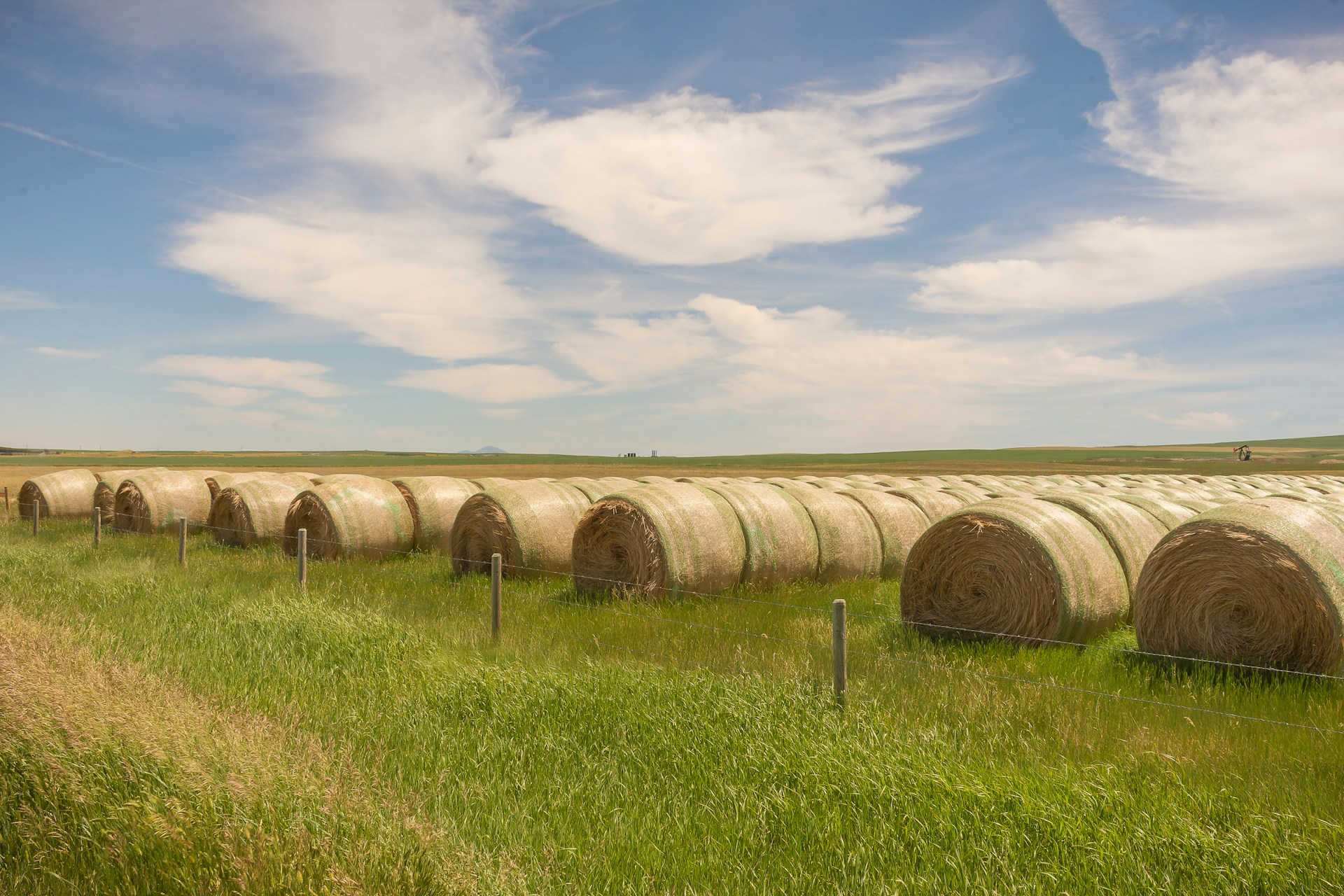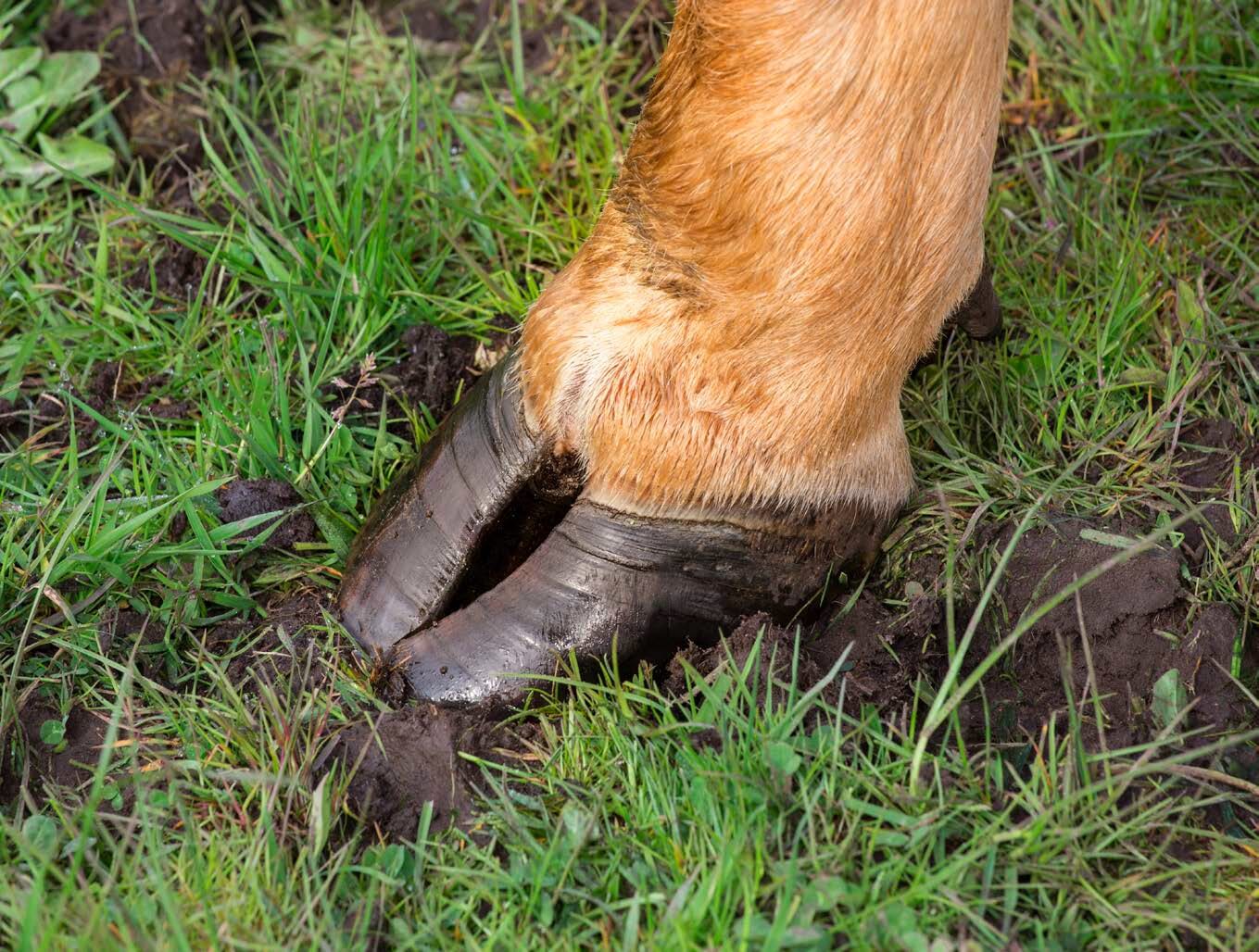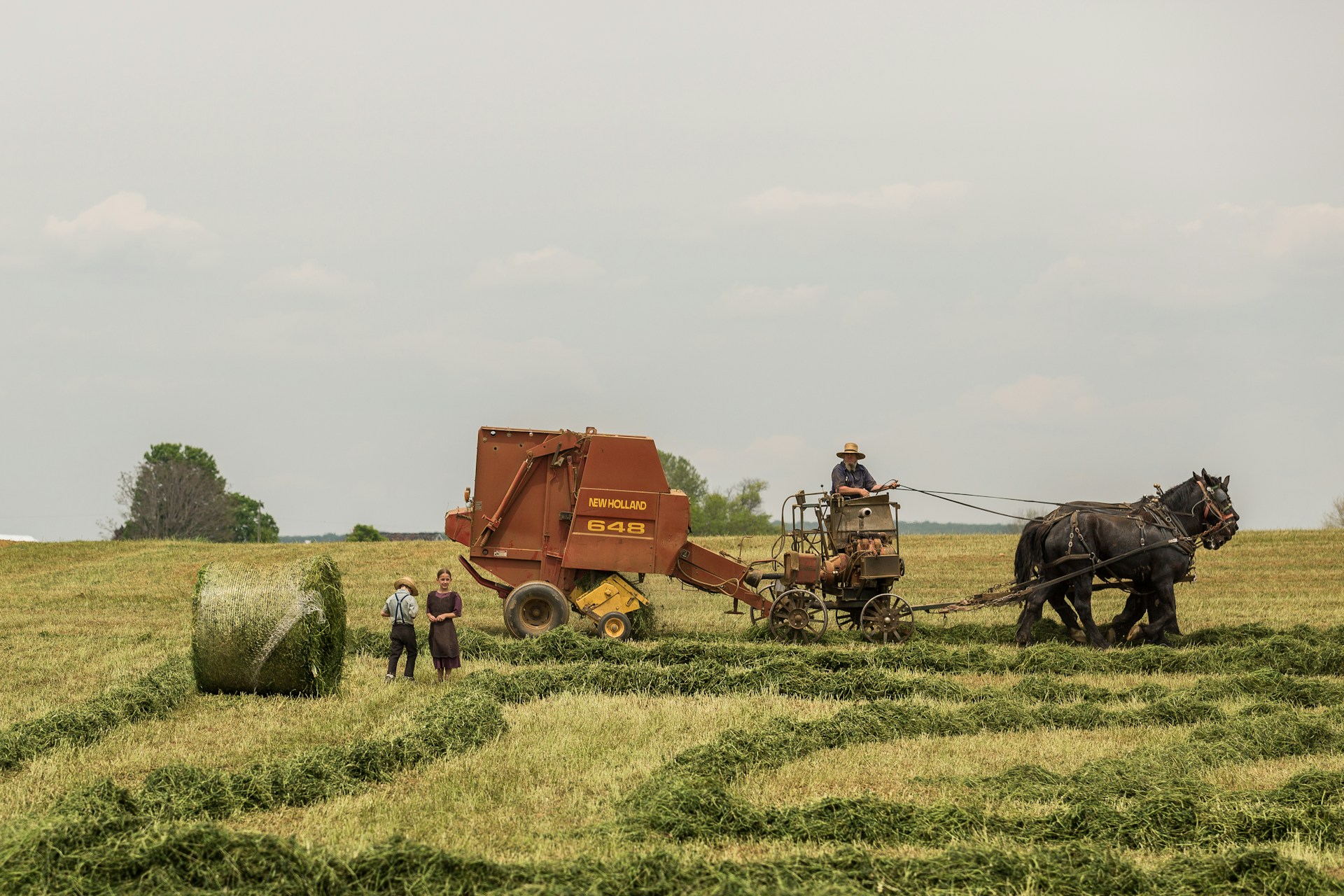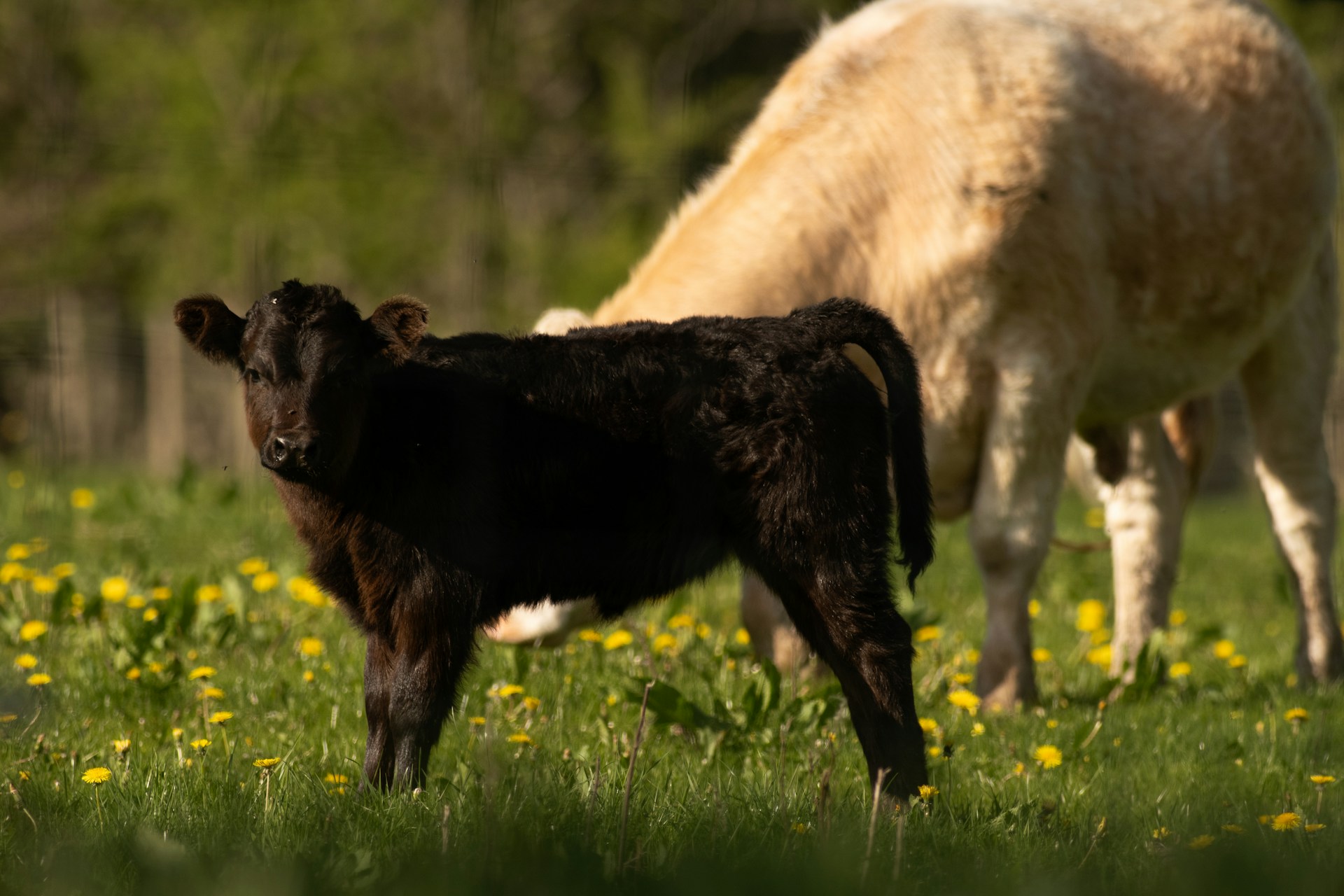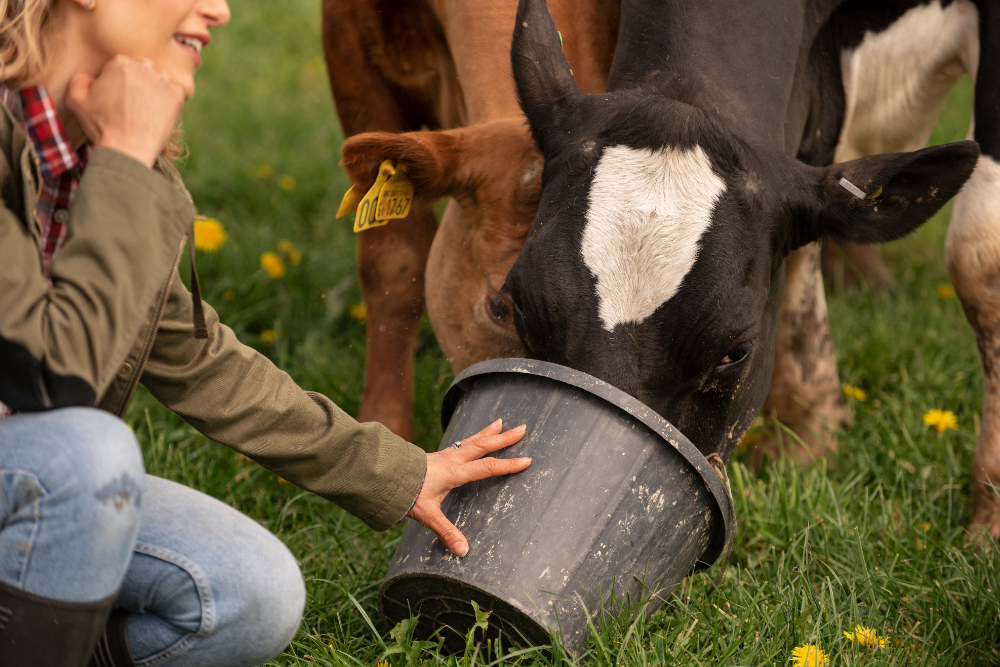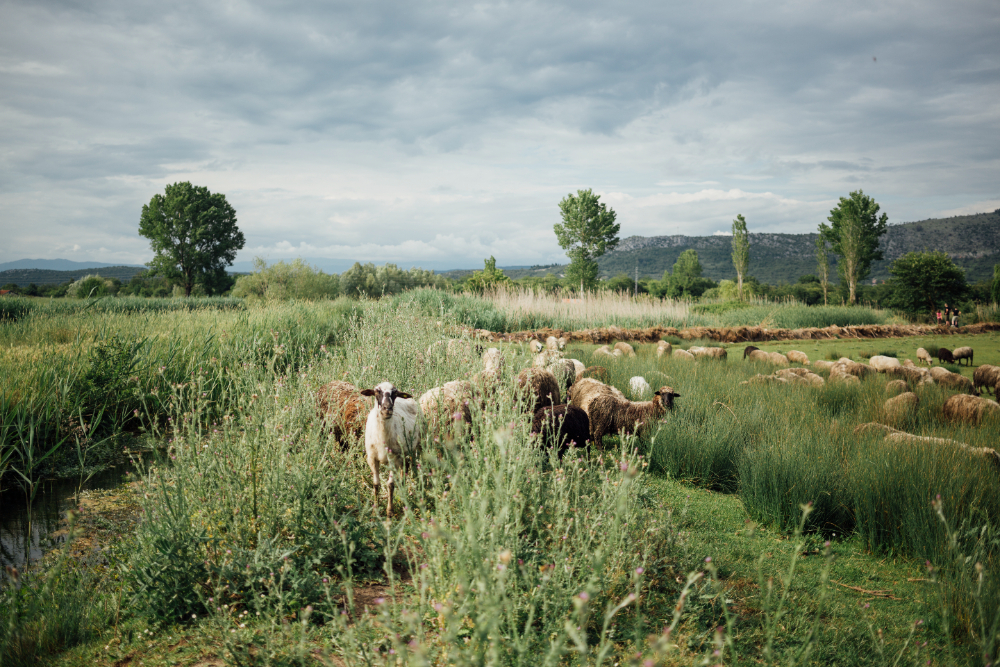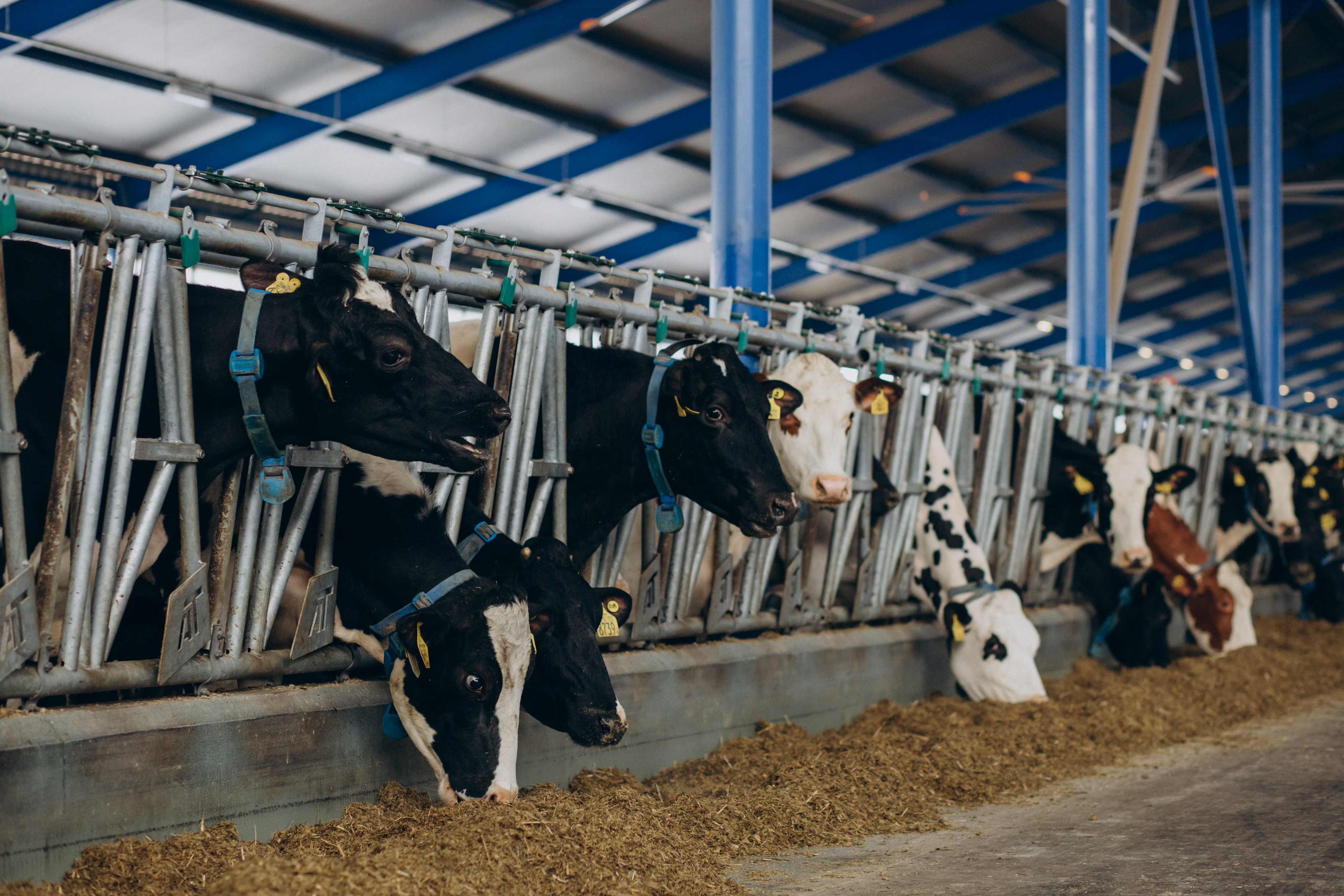Basic Ruminant Nutrition
Brian Karisa, PhD. ©2025
Understanding the Foundations of Ruminant Nutrition
Ruminants includes cattle, sheep, goats, and deer etc. They are unique among animals for their ability to efficiently digest complex plant materials that monogastric animals (like pigs or humans) cannot. This ability comes from their specialized digestive system, which includes four compartments: the rumen, reticulum, omasum, and abomasum. Each compartment is specialised for its function including the large surface area to improve digestive efficiency and the presence of rumen microbes that enhance the digestion process.
Ruminants require proper nutrition to maximize ruminant health, productivity, and reproduction, and welfare.
This article provides the basic foundational resources to understand ruminant nutrition, please review additional articles for more details on specific areas of this complex science.
The Ruminant Digestive System
The ruminant stomach works in a coordinated way to extract nutrients from roughage:
- Mouth
- Esophagus
- Rumen: The largest compartment, home to billions of microbes (bacteria, protozoa, fungi) that ferment fibrous plant material.
- Reticulum: Works closely with the rumen; involved in regurgitation (chewing cud).
- Omasum: Absorbs water and minerals.
- Abomasum: The “true stomach” where enzymatic digestion begins, similar to monogastric animals.
- Small intestines
- Large intestines
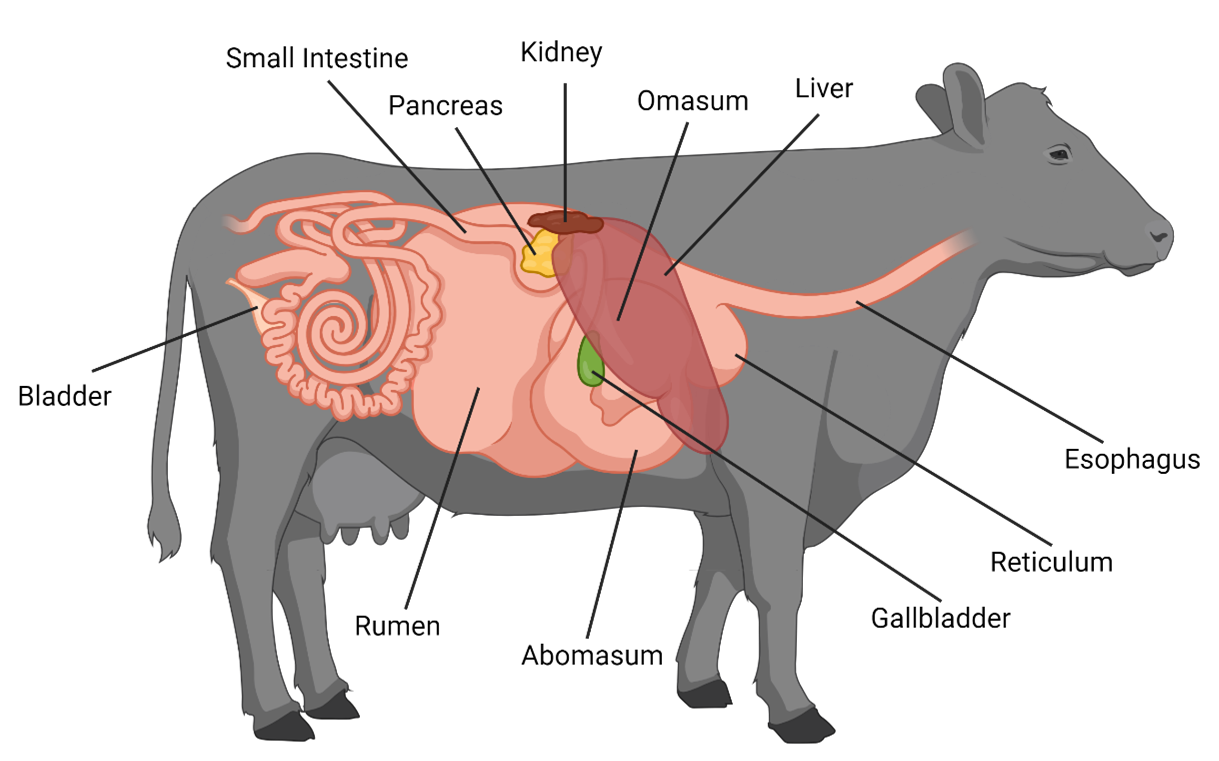
The 4 Compartments
The Rumen
Located on the animal’s left side, the rumen is the largest of the four stomach compartments and is made up of multiple interconnected sacs. Depending on the cow’s size, it can hold more than 25 gallons of ingested material. Its large capacity allows it to function as a storage chamber for recently consumed feed.
In addition to storing feed, the rumen serves as a fermentation chamber. Its warm, moist, and anaerobic environment supports a thriving population of microorganisms—including bacteria, protozoa, and fungi. These microbes ferment the feed and produce volatile fatty acids (VFAs), which are a key energy source for the animal. The rumen wall absorbs most of these VFAs during digestion.
A strong blood flow to the rumen lining enhances nutrient absorption. The inner surface of the rumen is covered with small finger-like projections called papillae, which expand the surface area and improve the efficiency of VFA uptake.
The Reticulum
The reticulum is a small, pouch-like chamber located toward the front of the body, near the heart. Its interior is lined with a honeycomb-like structure that helps trap dense materials. Although technically a separate compartment, the reticulum is closely connected to the rumen, and the two together are often referred to as the rumino-reticulum due to their continuous flow of contents.
Heavier feed particles and foreign metal objects that the animal may ingest tend to settle in the reticulum. If sharp objects like nails penetrate the tissue, they can lead to hardware disease, a potentially serious condition. Placing a magnet in the reticulum can prevent or reduce this risk. In more severe cases, surgical removal may be necessary. If not treated, the resulting infection could be fatal.
The Omasum
The omasum has a round, globe-like shape and contains many folds or layers of tissue that resemble pages in a book. Its primary role is to absorb water, electrolytes, and some fermentation by-products from the partially digested feed. Because of this absorption process, the material (ingesta) found here is noticeably drier than in the rumen or reticulum.
The Abomasum
The abomasum is the only one of the four compartments lined with secretory glands. These glands produce hydrochloric acid and digestive enzymes that chemically break down food—much like the stomach of non-ruminant animals such as pigs or humans. The abomasum is often referred to as the “true stomach” because of this similarity.
The Small Intestines
The small intestine consists of three sections: the duodenum, jejunum and ileum. Secretions from the pancreas and gallbladder are responsible for digestion within the small intestine. The small intestine completes most of the digestive process and absorbs many nutrients through finger-like projections called villi. Villi have very thin walls to make absoprtion easier, they also increase the surface area available where absorption could occur. From the villi the nutrients enter into the blood and lymphatic systems.
Cecum
The cecum is the area where the small and large intestine meet. Its exact function is not known but it seems to break down some previously undigested fiber.
Large Intestines
The large intestine is the last section of the tract that undigested feedstuffs pass through. The main digestive function of the large intestine is to absorb water. In addition, microbes present in the large intestines further digest some undigested feed.
Nutrient Requirements in Ruminants
Like all animals, ruminants require six basic nutrients:
1. Water:
Water is the most critical nutrient. It is involved in digestion, temperature regulation, and waste elimination. Ruminants should always have access to clean and fresh water.
2. Carbohydrates:
Carbohydrates are the main source of energy for ruminants. They can be found in forages such as grasses, hay, or silage, and grains. Ruminants have evolved to require fiber, not just for energy but also to maintain healthy rumen function.
3. Proteins:
Proteins are required for growth, reproduction, and milk/meat production. They can obtained from diets such as legumes (like alfalfa), oilseed meals (e.g., soybean, cottonseed), and non-protein nitrogen (e.g., urea in small quantities).
4. Fats:
Fats provide a dense energy source. They must be used in moderation because excess fat can disrupt rumen microbes.
5. Vitamins:
Vitamins are either fat-soluble or water-soluble. Fat-soluble vitamins include Vitamins A, D, E, and K.
Water-soluble include Vitamin B-complex and C. Most are synthesized by rumen microbes, though supplementation is sometimes necessary.
6. Minerals:
Macrominerals: Calcium, phosphorus, sodium, potassium, magnesium, sulfur.
Microminerals: Copper, zinc, selenium, cobalt, iodine, manganese, etc.
Mineral imbalances can lead to severe health problems (e.g., milk fever, grass tetany).
Types of Feed
Ruminant diets are typically composed of two main types of feed:
a) Roughages:
Roughages include pasture, hay, silage, crop residues. They are high in fiber but low in energy. They form the base of most ruminant diets.
b) Concentrates:
Concentrates include grains (corn, barley), protein meals (soybean meal), and commercial supplements. They are low in fiber but high in energy and/or protein.
Ration Formulation
Ration formulation can be done manually or using software such as CowBytes® or SheepBytes®. Rations should always be based on the animal needs (age, weight, production level) and available feed quality.
A balanced diet ensures:
- Adequate energy for maintenance and production.
- Proper protein-to-energy ratio.
- Sufficient fiber to prevent digestive disorders like acidosis.
- Correct mineral and vitamin levels.
Rumen Development in Calves
In newborn calves, the rumen is small and underdeveloped, as their diet consists entirely of milk, which bypasses the rumen through the esophageal groove and goes directly to the abomasum. As long as the calf is fed only milk, the rumen remains largely inactive and lacks significant microbial activity.
True rumen development begins when the calf starts consuming solid feeds such as grain and forage. These solid feeds stimulate microbial colonization in the rumen and reticulum. The fermentation of these feeds by microbes produces volatile fatty acids (VFAs)—particularly butyrate and propionate—which play a crucial role in stimulating the growth of rumen tissues and the development of papillae (the finger-like structures that increase surface area for nutrient absorption).
It’s important to note that calves don’t need to consume cud or be exposed to adult animals to initiate rumen development. Feeding grain early in life, with or without access to forage, accelerates the formation of papillae and increases their size and density. This structural development supports the transition to a functional rumen.
By around three months of age, with appropriate feeding practices, the calf’s rumen can function similarly to that of a mature ruminant, allowing it to efficiently digest and utilize fibrous feeds.

